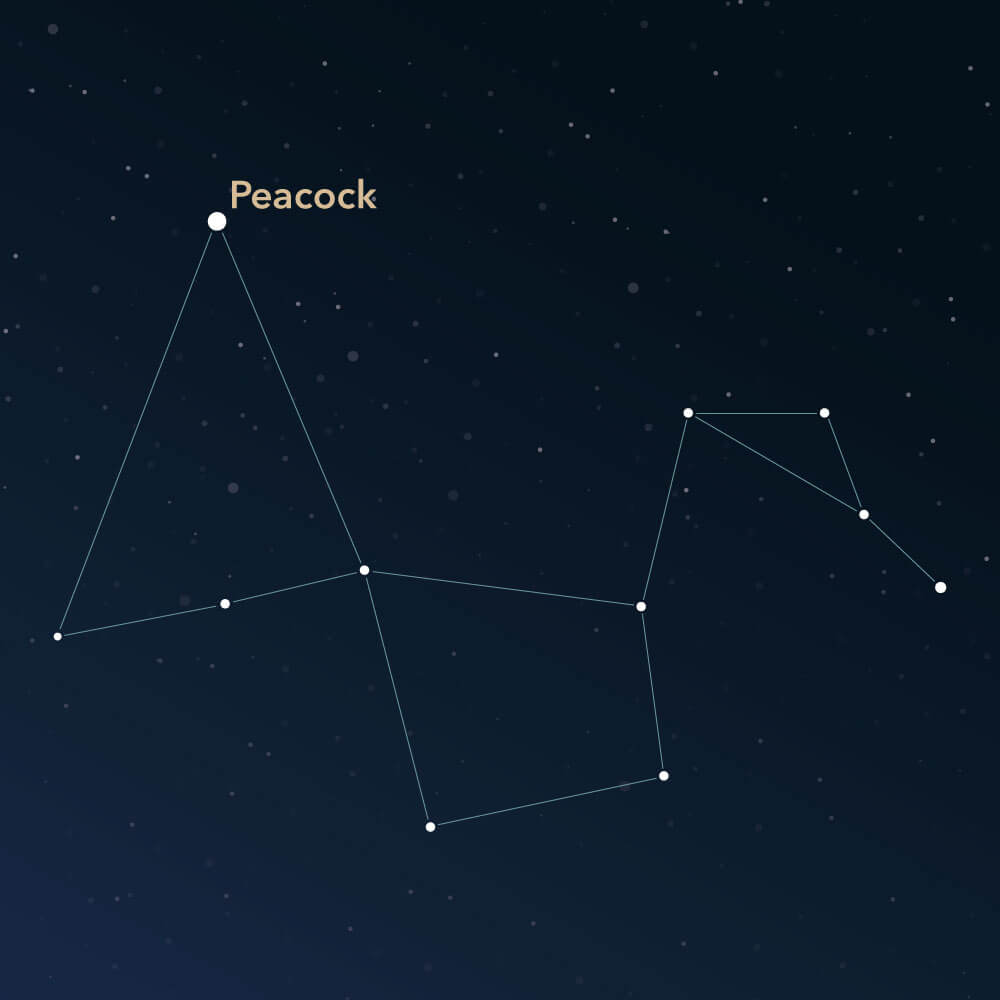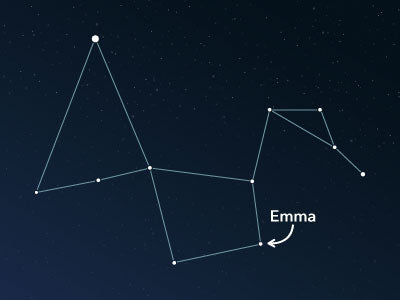The constellation Pavo
Characteristics
- Other names / Symbolism
- Peacock
- Hemisphere
- Southern hemisphere
- Visibility
- June - September
- Area
- 378 deg²
- Brightest star
- Peacock (HIP number 100751)
- Specialties
- Galaxies, globular clusters

The Pavo, Latin for Peacock, is an inconspicuous constellation in the southern sky. It was introduced by Dutch sailors at the end of the 16th century. There are only a few deep-sky objects in its area. However, one object is particularly impressive.
Hemisphere, visibility, and area
The constellation Pavo lies in the southern celestial sky and can be observed from all regions of the southern hemisphere. North of the equator, it is only fully visible up to the 15th latitude. That corresponds roughly to places such as Guatemala City in Guatemala, Dakar in Morocco, or Cape Verde on the West Coast of Africa.
The months of June to September offer the best view of the constellation. Pavo stretches over the night sky with an area of approximately 378 square degrees. Compared to all other 88 constellations, it ranks 44th in size.
There are different visualizations of the Pavo. In some star maps, the main stars are connected to form a kind of circle, while in other representations, the star links form various geometric shapes that are interconnected.
The head of the Pavo is always formed by the brightest star in the constellation. It is named Peacock (Latin: α Pavonis, Alpha Pavonis). It is a blue subgiant with an apparent brightness of roughly 1.94. It is located about 180 light-years away from earth.
All other stars are not particularly bright, making it challenging to find the Pavo in the night sky. Therefore, it can be helpful to orient oneself to the neighboring constellations. These include the Telescopium, the Ara, and the Apus. The Octans and the Indus also border on Pavo.
Specialties in the constellation
There are only a few objects to observe in the area of Pavo. These include some galaxies and a globular cluster.
The globular cluster NGC 6752, also known as Caldwell 93, offers a special sight. With an apparent brightness of about 5.3, it is the third-brightest globular cluster in the night sky. Its age is also very impressive. Estimates suggest that NGC 6752 is 13.8 billion years old, which corresponds to the age of the universe. The globular cluster was discovered by the Scottish astronomer James Dunlop in 1826.

History and mythology
At the end of the 16th century, a Dutch fleet traveled to the legendary Spice Islands to create new trade relationships. During this trip, the positions of 135 stars were measured under the command of Captain Pieter Dirkszoon Keyser, which were later included by Peter Plancius in his sky maps.
From these stars, he recognized twelve new constellations, including "De Pauww." A few years later, the constellation was included in the new celestial atlas as "Pavo."
According to Greek mythology, Hera's favorite bird was a peacock. Her husband Zeus had another lover, whom he transformed into a young cow to protect her from his jealous wife.
However, Hera was not fooled and sent the hundred-eyed giant Argus to guard the young cow, who never slept. Zeus, in turn, sent Hermes, who played lullabies, to Argus until all his eyes closed from fatigue.
Hermes used this moment to kill Argus and free Zeus's lover. Angry, Hera then sent a gadfly, which the cow was so afraid of that she swam away and never returned.
As a reward for his loyalty, Hera put Argus's eyes on the feathers of the peacock.
PublishedRead more interesting articles

An overview of all 88 constellations
Learn more about all 88 constellations and read interesting information about the mythology, visibility, and features.

Planetarium App
Discover the night sky with our planetarium app!
Available for iOS and Android.

Name a star in the constellation Pavo
Name a star in a constellation and create something that lasts for eternity.